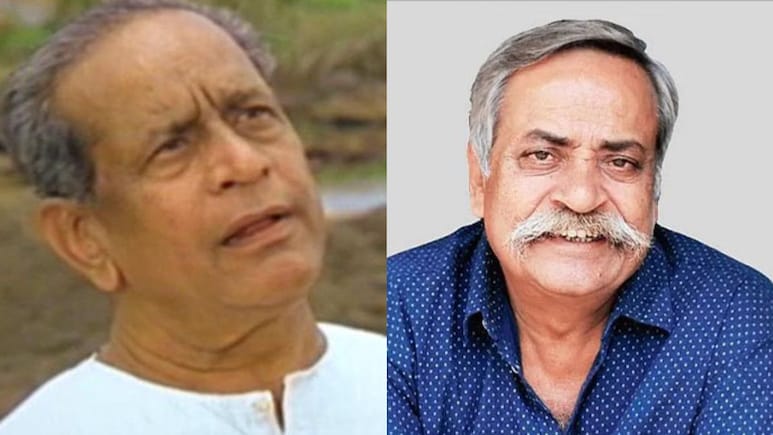
Imagine the country's heart as a giant radio dial, and on 15 August 1988, someone clicked "play". The static faded, voices from Kashmir to Kanyakumari rose in unison, and the melody of Mile Sur Mera Tumhara filled the air. It wasn't just music, it was a moment.
Behind that moment was a man who seldom made the front page of tabloids, but whose words and ideas have echoed through millions of living rooms: Piyush Pandey.
Yes, the same Piyush Pandey who built campaigns for brands like Fevicol and Cadbury. The same Piyush Pandey who wrote what became the lyrics of one of India's most enduring cultural artefacts, capturing in six minutes what poets and essayists take pages to say: unity in diversity.
The ad legend died on Friday (October 24) at the age of 70. After his death, Mile Sur Mera Tumhara began trending on X (formerly Twitter).
Let's revisit how Pandey helped define a narrative of bonding for a whole nation that still echoes nearly four decades later.
The Genesis Of A Melody For All
In 1988, it was conceived that a song could do more than entertain: it could unite. The original concept for Mile Sur was developed by the Lok Seva Sanchar Parishad and promoted through Doordarshan and the Ministry of Information & Broadcasting.
The intention: create a film-song that celebrates India's linguistic, cultural and regional diversity while reinforcing a sense of national belonging.
The creative team: legendary Hindustani vocalist Pandit Bhimsen Joshi was asked to head the composition, with arrangement by Louis Banks, lyrics by Piyush Pandey, conceived by Suresh Mallik and director-producer Kailash Surendranath.
Pandit Joshi suggested using Raag Bhairavi as a base, which Mallik decided would allow the fusion of Hindustani and Carnatic classical traditions together with modern instrumentation.
The lyrics-crafted by Pandey, went through 17 prior drafts before the 18th version was approved.
Meanwhile, the film version incorporated aerial shots of the Taj Mahal, a sequence at the Pambar Falls (aka Liril Falls), a cameo by Kamal Haasan at a beach with M Balamuralikrishna, and featured the Kolkata Metro, the Deccan Queen train, children from Shimla, all locations and symbols chosen deliberately to reinforce national integration.
First telecast: On India's 42nd Independence Day, following the Prime Minister's address from the Red Fort, the video ran for the first time on Doordarshan.
Mile Sur Mera Tumhara's Legacy: What Remained, What Evolved
The original version ran about six minutes and featured voices and faces from all walks of Indian life: young and old, across the country's linguistic spectrum.
The song sailed through Kashmiri, Punjabi, Sindhi, Urdu, Tamil, Kannada, Telugu, Malayalam, Bangla, Assamese, Odia, Gujarati, and Marathi languages present in the Eighth Schedule of the Constitution at the time.
Highlights:
- The opening shot: Pandit Bhimsen Joshi at the Pambar Falls in Kodaikanal. The same falls were earlier used in the famous Liril ad.
- A helicopter-aided aerial shot of the Taj Mahal (an operation that, behind the scenes, got an Air Marshal in trouble).
- Broader imagery: the first metro in India (Kolkata Metro), the Deccan Queen train, and school children in Shimla, all woven into one film.
- Kamal Haasan's cameo was unplanned; he accompanied his guru M Balamuralikrishna, to a beach shoot and was included.
- Lata Mangeshkar's recording: she made time at the last minute and recorded the song in a sari whose pallu donned the tri-colour of the Indian flag.
Every detail was chosen to reinforce one message: India is many, yet one.
Two decades later, in 2010, a newer version titled Phir Mile Sur Mera Tumhara aired on 26 January. Directed once again by Kailash Surendranath, the 16-minute version retained Louis Banks as composer and featured an updated roster of musicians, singers, actors and sports persons.
It included musicians AR Rahman, Shankar-Ehsaan-Loy, Anoushka Shankar, Shivkumar Sharma, Rahul Sharma, Zakir Hussain, Bhupen Hazarika, Sivamani, L. Subramaniam, Amjad Ali Khan, Amaan Ali Khan, Ayaan Ali Khan, Louis Banks, Darshan Doshi, and Siddharth Mahadevan.
Among the singers were Shreya Ghoshal, Gurdas Maan, Shaan, Kavita Krishnamurthy, KJ Yesudas, Vijay Yesudas, Sonu Nigam, Karthik, NC Karunya, and Amitabh Bachchan.
The actors featured included Suriya, Amitabh Bachchan, Vikram, Aishwarya Rai Bachchan, Abhishek Bachchan, Mahesh Babu, Juhi Chawla, Prosenjit Chatterjee, Rituparna Sengupta, Shilpa Shetty, Salman Khan, Deepika Padukone, Priyanka Chopra, Mammootty, Shobana, Sonali Kulkarni, Atul Kulkarni, Aamir Khan, Shahid Kapoor, Ranbir Kapoor, and Shah Rukh Khan.
Representing Indian sports were Abhinav Bindra, Bhaichung Bhutia, Mary Kom, Vijender Singh, Sushil Kumar, Pullela Gopichand, and Saina Nehwal. The film also featured sand artist Sudarshan Pattnaik, choreographer Shiamak Davar, and filmmaker Karan Johar.
While ambitious, it invited criticism for its heavy Bollywood focus and the omission of certain communities (notably Sindhi) and personalities (such as APJ Abdul Kalam, Sachin Tendulkar, Vishy Anand) was seen by many as diluting the original's balance.
In 2020, a version was woven into the soundtrack of the film Street Dancer 3D by composers Sachin Sanghvi and Jigar Saraiya.
Why It Still Matters
For media and culture watchers, the story of Mile Sur is more than nostalgia. It provides a template of how media can reflect identity, belonging, aspiration.
Even today, when regional identities are asserted, languages jostle, digital media fragments audiences - the song stands as a quiet beacon of hope: we can speak many tongues, but our song can still join in harmony.
And Piyush Pandey's role isn't just that of lyricist: he helped author a moment in which advertising, national emotion and collective memory intersected. He proved that a 6-minute film-song could live far beyond its airtime; it could live in conversations, classrooms, morning commutes and collective memory.
Track Latest News Live on NDTV.com and get news updates from India and around the world

